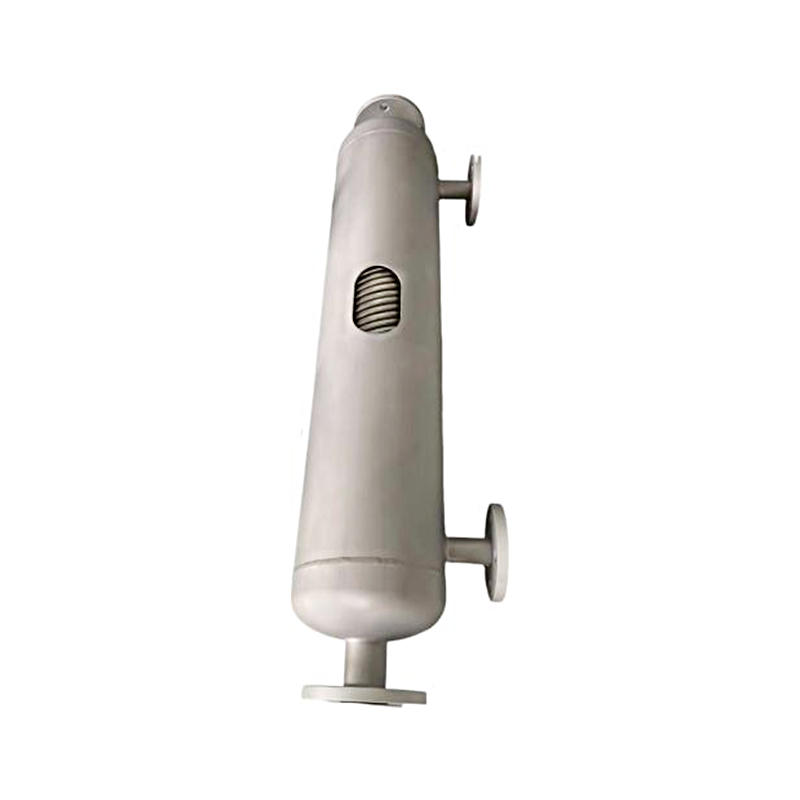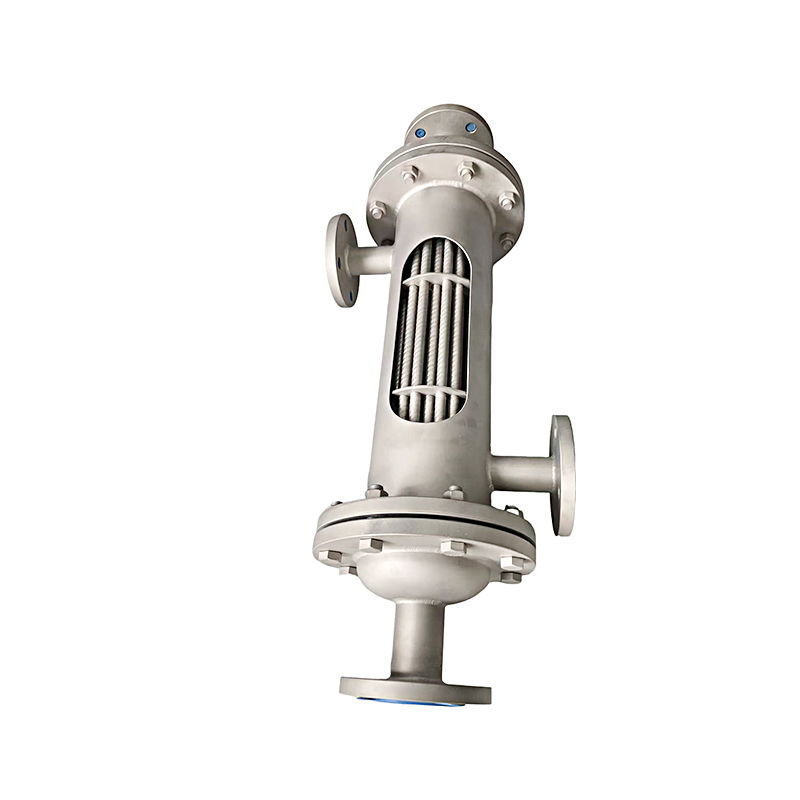How to ensure uniform fluid distribution in a stainless steel spiral wound tube heat exchanger?
Release Time : 2025-10-23
The stainless steel spiral-wound tube heat exchanger achieves highly uniform fluid distribution through a unique structural design and optimized process. Its core mechanism lies in the synergistic effect of tube bundle arrangement, flow path design, support structure, and manufacturing process.
The spirally wound tube bundle arrangement is fundamental to ensuring uniform fluid distribution. The device utilizes a multi-layer, multi-turn spiral winding structure, with adjacent tube bundles wound in opposite directions, and the tube spacing precisely controlled by spacers. This counter-rotating spiral arrangement not only extends the fluid path and increases the heat transfer area, but more importantly, forms a complex three-dimensional flow channel. As the fluid flows within the tube, it is guided by the spiral structure, generating intense secondary circulation, disrupting the boundary layer and ensuring thorough mixing of the fluid in both the radial and axial directions, avoiding localized dead zones or short-circuits.
The optimized flow path design further enhances fluid uniformity. The flow path of the stainless steel spiral-wound tube heat exchanger is composed of the spirally wound tube bundle and the shell. Fluids in the tube and shell sides exchange heat through the tube walls. During the design process, computer simulations and experimental verification were used to continuously optimize the tube bundle's spiral angle, winding density, and flow channel cross-sectional shape to ensure stable turbulent flow both within the tubes and in the shell. This enhanced turbulence allows for continuous mixing of the fluid during flow, resulting in more uniform temperature and velocity distributions, thereby improving overall heat transfer efficiency.
The design of the support structure is also crucial to uniform fluid distribution. The stainless steel spiral-wound tube heat exchanger utilizes evenly spaced support plates or rings to secure the spirally wound tube bundle within the shell. These support structures not only provide the necessary mechanical strength but also, through precise positioning and spacing control, prevent vibration and misalignment of the tube bundle during operation. Furthermore, the support structure design fully considers the thermal expansion and contraction of the tube bundle. Using elastic connections or sliding supports, these structures ensure that the tube bundle can expand and contract freely with temperature fluctuations, preventing deformation or damage due to thermal stress, thereby maintaining the stability of the fluid channel.
Manufacturing precision is also a key factor in ensuring uniform fluid distribution. During the manufacturing process of the stainless steel spiral-wound tube heat exchanger, stringent requirements are imposed on the tube bundle's winding angle, tube diameter consistency, and weld quality. High-precision winding and fully automated welding ensure that the tube bundle's geometric dimensions and joint strength meet design requirements, preventing uneven fluid distribution caused by manufacturing errors. Furthermore, non-destructive testing techniques are used during the manufacturing process to thoroughly inspect the tube bundle to ensure it is free of defects such as cracks and pinholes, further enhancing equipment reliability and uniform fluid distribution.
In practical applications, the stainless steel spiral-wound tube heat exchanger further optimizes fluid distribution through the rational design of inlet and outlet ports. The position and dimensions of the inlet and outlet ports are optimized based on fluid dynamics principles to ensure uniform flow of hot and cold fluids into and out of the tube bundle, avoiding flow deviation or short-circuiting caused by improper inlet and outlet design.
The uniform expansion coefficient of stainless steel also facilitates uniform fluid distribution. Since both the tube bundle and the shell are made of stainless steel, their expansion coefficients are consistent during temperature fluctuations, preventing seal failure or fluid leakage due to thermal stress, thereby maintaining stable fluid distribution.








